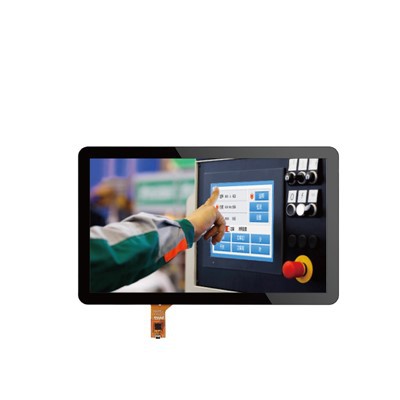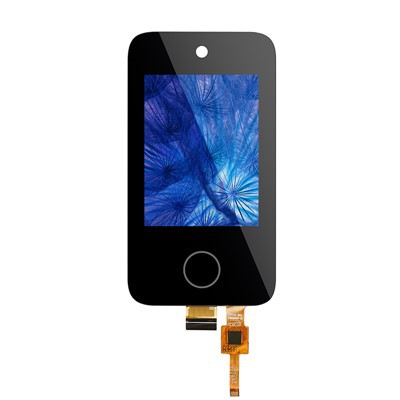Shenzhen Risenta display electronic co., ltd was established in ShenZhen in 2007 and has 15 years of professional experience in LCD display and LCM. We have a number of technical personnel specializing in LED, LCD and LCM R&D and management & technical personnel dedicate to production and management.
Why choose us?
Development
Risenta display has 3 plants, all of which has passed ISO9001 quality management system certification and located in Dongguan City, ShenZhen City and Fuzhou City.
Certificate
ISO9001, ISO14001, ISO45001, IEC62133, CE, FCC, ROHS, REACH, UL, ETL, IEC, ETL, KCC, PSE, SAA
Service
We provide you with full worry-free service from custom display solution discussion to engineering design to product verification to mass production to product shipment to after-sales consultation.
Reliable Supply
We offer a vertically integrated supply chain model to ensure reliable long-term supply and complete traceability.
What are the lcd module and its components
Liquid crystal display module or LCD module is an electronic component used to display images and texts. It consists of one or more liquid crystal screens, which can display texts, images and other information.
The working principle of the LCD module is that the liquid crystal screen is composed of a series of small pixels composed of liquid crystal molecules, and each pixel has an electrode. When a voltage is applied to the electrodes, the LCD molecules will emit light, thereby displaying images and text . The advantages of LCD modules are small size, low power consumption, fast response, can display multiple colors, and can work at low temperature, so they are widely used in electronic equipment.
Liquid crystal display module, abbreviated as LCM, that is, the entire part of the liquid crystal display without a casing, which includes a backplane, LED lights, reflective film, LGP, upper and lower diffusion films, and a backlight composed of a brightness enhancement film, that is, B/L.
Then, glass substrates, PCB boards and liquid crystals make up open-cell, then plus the casing, the backlight power supply and the LVDS signal of the open-cell are a complete liquid crystal display.
What's the type of lcd module
Liquid crystal display module, according to the connection mode of liquid crystal display and liquid crystal display control driver, can be divided into three categories: surface mount LCD module, COB LCD module and COG LCD module.
● Most of the surface-mounted LCD display modules use plastic LCD display drivers, plastic forms include DIP, SOP, PLCC and other forms, the advantages are excellent performance, easy maintenance, good temperature characteristics, the disadvantage is expensive, IC packaging volume is large.
● COB LCD module is the liquid crystal display control driver directly packaged on the PCB printed circuit board, the advantage is space-saving, cost-effective, flexible production, the disadvantage is that the processing is more complicated, IC must be scrapped after failure.
● COG LCD module is the liquid crystal display control driver IC directly packaged on the glass substrate of the liquid crystal display, the advantage is miniaturization, low cost, the disadvantage is that the processing is complex, mass production must be produced, and maintenance is difficult (after the failure, the LCD module needs to be scrapped as a whole).
Advantages
The liquid crystal display module is an efficient, reliable, and low-cost display solution that can provide clear and vivid image and text display.
It can provide high-resolution images, can display complex graphics and text, and can provide Higher visibility.In addition, LCD modules can also provide lower power consumption, longer service life, smaller size, lower cost, higher reliability and higher programmability.
In addition, the low latency of LCD liquid crystal display modules can improve user experience, while the low cost can reduce the overall cost of products.
Therefore, LCD liquid crystal display modules are an ideal display solution that can meet the needs of various applications.
LCD display module principle is realized through the physical characteristics of liquid crystal. The liquid crystal display module is composed of a liquid crystal panel, a backlight module, a driver IC and a control IC. The liquid crystal panel is composed of a layer of film and a layer of electrodes. When a voltage is applied to the electrodes, the liquid crystal molecules in the liquid crystal panel will change, thereby changing the light transmittance of the liquid crystal panel, thereby realizing the display effect.
The backlight module is composed of one or more LEDs. When the LED emits light, the liquid crystal molecules in the liquid crystal sheet will change, thereby changing the light transmittance of the liquid crystal sheet, thereby realizing the display effect. The driver IC and control IC are used to control the brightness of the LED and the voltage of the liquid crystal panel to achieve the display effect.
What are the applications of lcd module
● Automotive industry: Car dashboard, car entertainment system, car navigation system, etc.
● Household appliances industry: TV sets, washing machines, air conditioners, refrigerators, etc.
● Medical industry: Medical instruments, medical equipment, etc.
● Industrial control industry: Industrial control equipment, industrial automation system, etc.
● Consumer electronics industry: Mobile phones, tablet computers, game consoles, etc.

Nowadays, different LCDs are used in various applications, from calculators, watches, games to medical and industrial applications. The display content easily modified to satisfy the exact requirements of an application is one of the main advantages of LCDs over all other display technologies. The customized LCD panels can show particular user interface information that enhances the product performance and value.
Customized LCDs display alphanumeric digits, numeric, ON, or OFF indicators, graphic icons, messages, pie charts, bar graphs, symbols, etc. The content of the LCDs panel is limited only by the product designer's imagination. Many factors should be considered in the design of a customized LCD panel.
Advantages Of Custom LCD
Custom LCD monitors display static images with full-color detail from computer sources extremely well and no screen burn-in.
The number of pixels/square inches on an LCD is typically higher than other display technologies.
Custom LCD monitors are good at displaying a large amount of data, e.g., on an Excel spreadsheet with exceptional clarity and precision.
Custom LCDs are available in many sizes.
They are not affected by increased or decreased air pressure in airplanes.
Custom LCD technology is not prone to ghosting or screen burn-in.
Custom LCD televisions require less power to operate than a plasma TV.
There are many types of Liquid crystal displays that you need to choose from. Some are modern technology, and others are older types of displays.
There are some categories, and types of the LCD are:
Monochrome can be divided into:
Graphic LCD
Segment LCD
Multi-Color
CSTN(Kind of STN)
TFT
Silk-Printing for monochrome LCD(TN, HTN, STN, FSTN, DSTN, VA)

Custom LCD screens are available in various sizes ranging from small digital watches to very large televisions or used as glass or plastic panels, where LCDs use two glass panels.
You can measure the size in inches from corner to corner, and almost any size is available.
What is the largest possible size?
The largest LCD we can make is 460*360mm. Because the whole glass panel size is 470*370mm, we need to cut 5mm on each side to keep the glass in good condition.
What is the smallest possible size?
There is a higher interest in a small custom LCD Display module. As a common rule, the larger the size of the screen, the more expensive the cost of the display. At present, the minimum size of the display that we have designed and mass-produced can reach 10*10mm.
Customize Lcd Module a Good Fit For My Product?
The Custom LCD display requires time and effort to design, although not as long as most engineers think.
In the not too distant past it was uncommon for an OEM, or manufacture to design and purchase a customized LCD display. The main reason was that the MOQs (Minimum Order Quantities) were very high, the tooling (NRE or Non-Recurring Engineering) was prohibitive and the lead times would stretch out for several weeks. This has changed drastically in the last four to five years. Many of these barriers and restrictions have been reduced.
Recent Changes In Custom LCD Displays:
In the last few years there have been many changes in custom LCD display technology. Many of these changes include new types of display technologies, new manufacturing process and increased efficiency in the display industry.
These changes include:
Faster proto-typing of samples
Lower MOQ
Lower tooling cost for custom color displays
Types of Custom LCD Displays
The scope of this article covers five custom LCD Display technologies.
Static / segment custom lcd display overview:
Static LCD Displays also referenced as static, direct-drive or segmented displays are the oldest of the five display technologies. These types of displays are very common in such applications as gas pumps, clocks, and thermometers. They are monochrome, meaning that they have one common color such as gray or yellow/green. The popularity of these displays has not decreased, but actually increased with the reduction in cost of customized modules.
Earlier versions of these displays were only available in TN (twisted nematic), options now include STN (super-twisted nematic) and FSTN (Film compensated STN). FSTN offers a sharper contrast than STN, STN offers a sharper contrast than TN. The cost difference between FSTN, STN and TN is roughly 5% to 8%.
Seven segment, fourteen segment and sixteen segment displays are excellent for applications that require both low cost and low power. In fact, static displays with no backlight and operating at 25C can operate in the range of 2uA per CM^2.
Static / Segment Custom LCD Display Options:
Static / Segmented Custom LCD Displays offer the following customization.
● Size of glass: The display can be built as large as 10 inches (250mm) in the diagonal. The advantage of custom sized glass is that the display is built around your product and not the other way around.
● Segment size: Segmented displays contain either seven segments or some number of segments to displays numbers and a few letters. The engineer or designer can choose how many segments and the size of each segment. It is possible to have different segment sizes on the same display. The variance in segment sizes does not affect the cost of the tooling (NRE).
● Custom Icons: There are many standard icons such as battery indicator, AM/PM and F/C. A customized Static display allows the customer to incorporate unique icons. We have supplied custom LCD displays that included icons of the company name or logo. Products that will be used outside of the United States offer icons specific to metric values such as mm, kg, celsius, as with other options on a custom segmented display. The number of icons does not affect the tooling cost. Each additional segment or icon has a very small increase on the total cost of the display.
● Backlight Options: Standard and custom static displays do not contain a backlight. The backlight needs to be designed around such factors as the size of the glass and the type of polarizer. The tooling cost of the backlight tends to be greater than the cost of the LCD. This leads many companies not to incorporate a backlight or switch over to a monochrome graphics LCD module with a built in backlight.
Our Factory
Risenta display has 3 plants, all of which has passed ISO9001 quality management system certification and located in Dongguan City, ShenZhen City and Fuzhou City. It has 10 production lines, including 5pcs black & white segment LCD production lines, 3pcs color Lcm production lines, 2 pcs Led backlight production line, and more than 100 sets of professional lcd equipment.


FAQ












